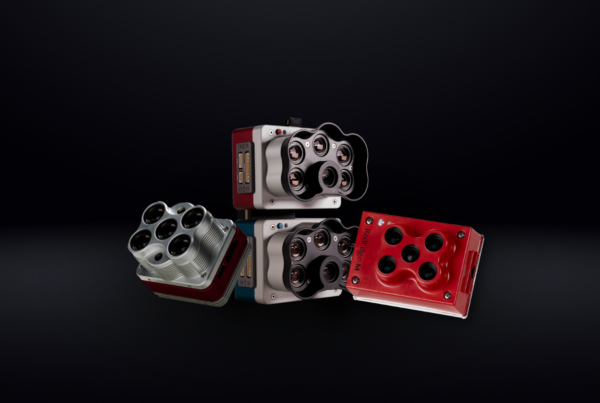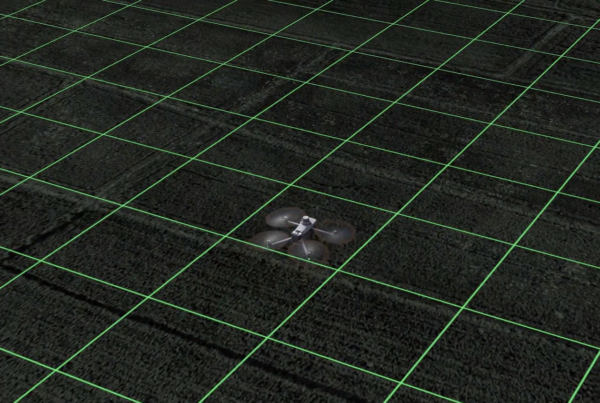Crop spraying is an essential agricultural practice designed to apply pesticides, fertilizers, or other necessary inputs to crops in a controlled and targeted manner. Traditionally, this task was performed manually by farmers, who would use handheld sprayers or tractor-mounted spraying systems to cover their fields. This hands-on approach required significant time and effort, reflecting the dedication of farmers to nurture and protect their crops.
In a single flight hour, the DJI Agras T40 sprayer drone covers an expansive area, spraying up to 52 acres with precision and efficiency, not to mention its 70L tank capacity. With powerful, efficient UAVs becoming more relevant in the industry, farmers and agricultural co-ops can support sustainability, maintain healthy crops, and lower overall costs.
Let’s take a look at some of the best practices that help optimize operations with the DJI Agras T40 drone.
Crop Spraying Best Practices with the DJI Agras T40
- Precision Planning: Before initiating crop spraying with the DJI Agras T40, plan the flight route to ensure good coverage of the agricultural area.
- Weather Considerations: Choose optimal weather conditions for crop spraying to maximize effectiveness. Avoid windy or rainy days, as these conditions can impact the precision and uniformity of spray distribution.
- Calibration Checks: Regularly calibrate the Agras T40’s spraying system to maintain accuracy. Check and adjust settings such as nozzle output and spray pressure to ensure consistent and efficient application of pesticides or fertilizers.
- Payload Management: Be mindful of the drone’s payload capacity and distribute the necessary amount of pesticide or fertilizer accordingly. Utilize the real-time weighing feature to monitor the spread quantity and remaining payload during operation.
- Obstacle Awareness: Leverage the Active Phased Array Radar and Binocular Vision system for 360-degree obstacle sensing. This ensures the drone can intelligently navigate around obstacles, preventing collisions and damage to both the drone and crops.
- Dual Atomization Optimization: Optimize the dual atomization feature to ensure even droplets during spraying. This enhances the efficiency of pesticide usage, promotes uniform coverage, and minimizes the risk of over-fertilization.
- Intelligent Cloud Integration: Explore the potential of the DJI Agras Intelligent Cloud when paired with complementary devices like the Phantom 4 Multispectral. Utilize variable spraying/spreading operations based on farmland prescription maps for precise and optimized pesticide and fertilizer usage.
- Part 137 Compliance: Following Part 137 regulations, carefully plan and execute your aerial application operations. Adhere to safety guidelines, pilot certification requirements, and operational standards to ensure compliance with regulatory authorities.
Why Do I Need Part 137?
Obtaining Part 137 certification is important for anyone engaged in agricultural aircraft operations, particularly drone pilots involved in agricultural spraying activities. These regulations, as detailed in the 14 CFR (Code of Federal Regulations), have been instituted by the Federal Aviation Administration (FAA) to provide a meticulous framework governing a range of activities crucial to the agricultural sector. If you operate a drone for dispensing substances in agriculture, such as pesticides or fertilizers, Part 137 certification becomes a necessary requirement. This certification is designed to ensure that aerial operations involving the application of agricultural inputs adhere to standardized practices, guaranteeing safety, and complying with aviation standards.
Only a limited number of companies in the U.S. have received Part 137 certification. This emphasizes the selectiveness and importance of Part 137 certification, indicating its relevance to those engaged in agricultural spraying activities. Drone Nerds can help guide you to the best resources when it comes to compliance & safety of your drone program; to learn more about the Part 137 license watch our video here.
Why Choose The DJI Agras T40?
In 2021, the Jiangsu Farming Group reduced fertilizer consumption by 10% while simultaneously boosting rice and wheat yields by 5%. Drones equipped with advanced technology allow for precise and variable spraying of fertilizers, pesticides, and other agrochemicals, ensuring that crops receive the right amount of inputs at the right time.
In summary, The DJI Agras T40 has cutting-edge features and one notable feature is its intelligent flight planning system, allowing farmers to map out the optimal spraying routes for maximum coverage. The T40’s high payload capacity is another advantage, enabling it to carry substantial amounts of agricultural inputs, reducing the need for frequent refills. The T40’s user-friendly interface and remote control capabilities make it accessible for operators of varying experience levels.
Overall, the DJI Agras T40 changes farming practices and contributes to a more sustainable and productive future. Want to learn more about what the T40 can do for you? Connect with our experts.




